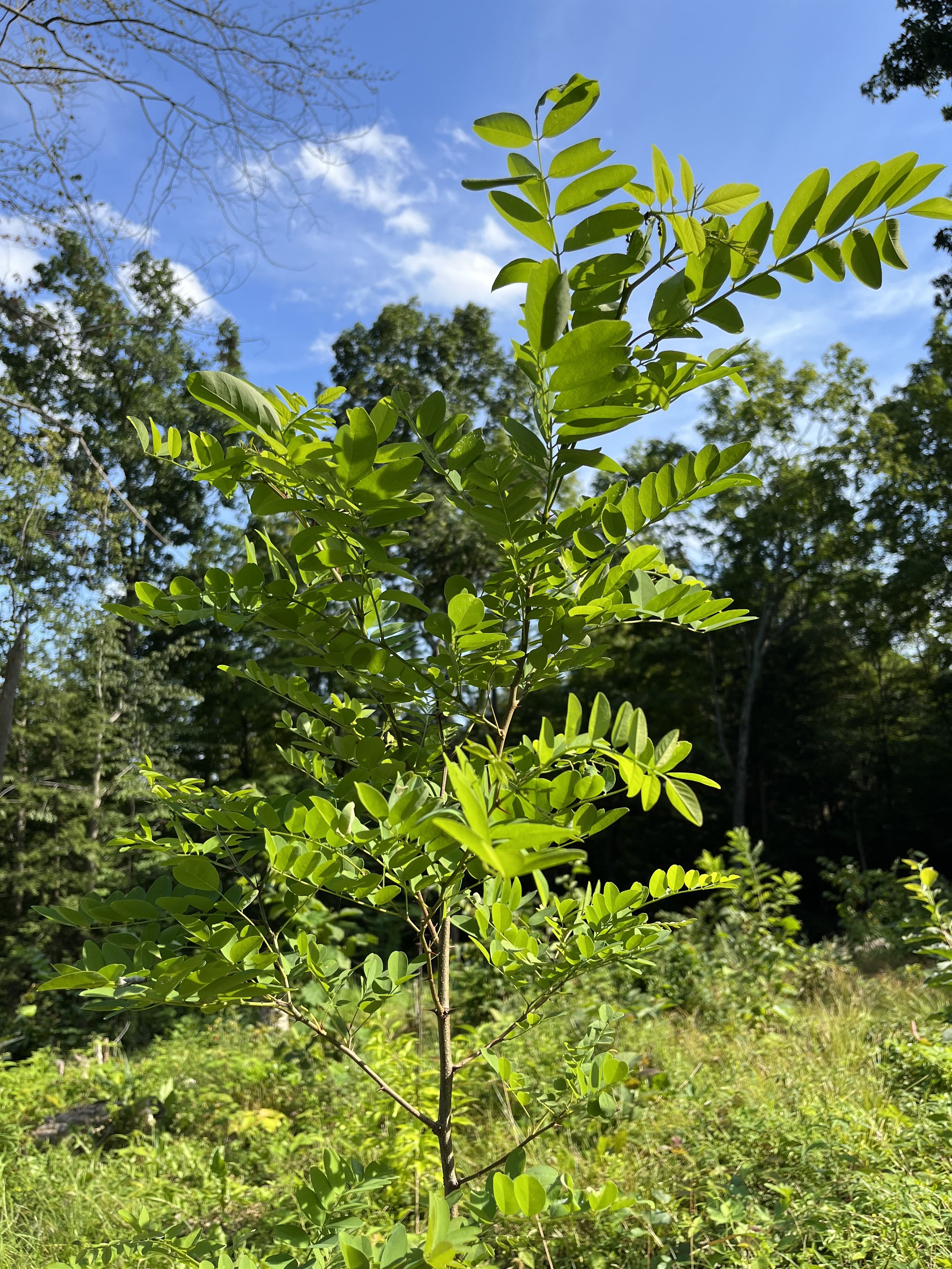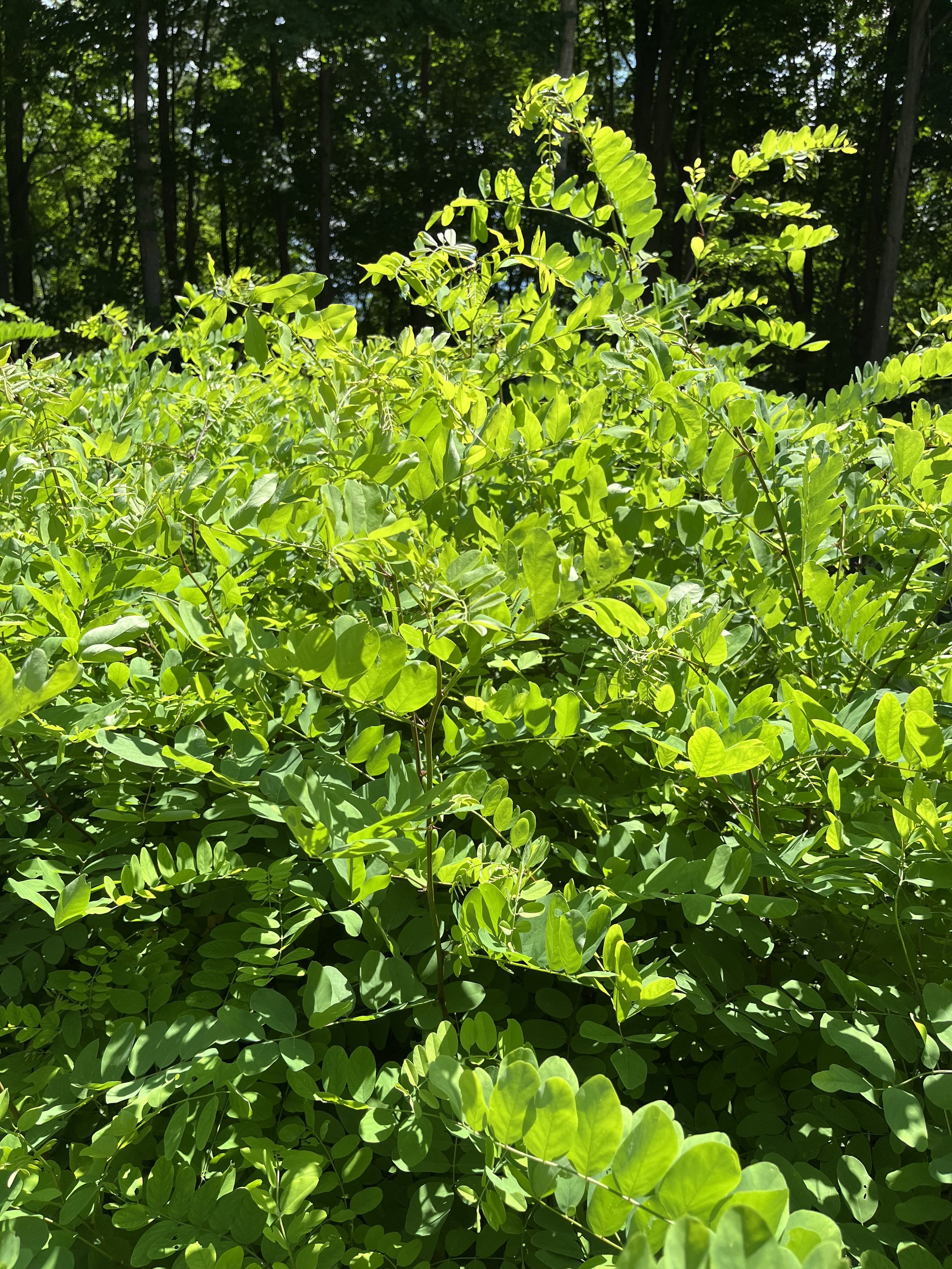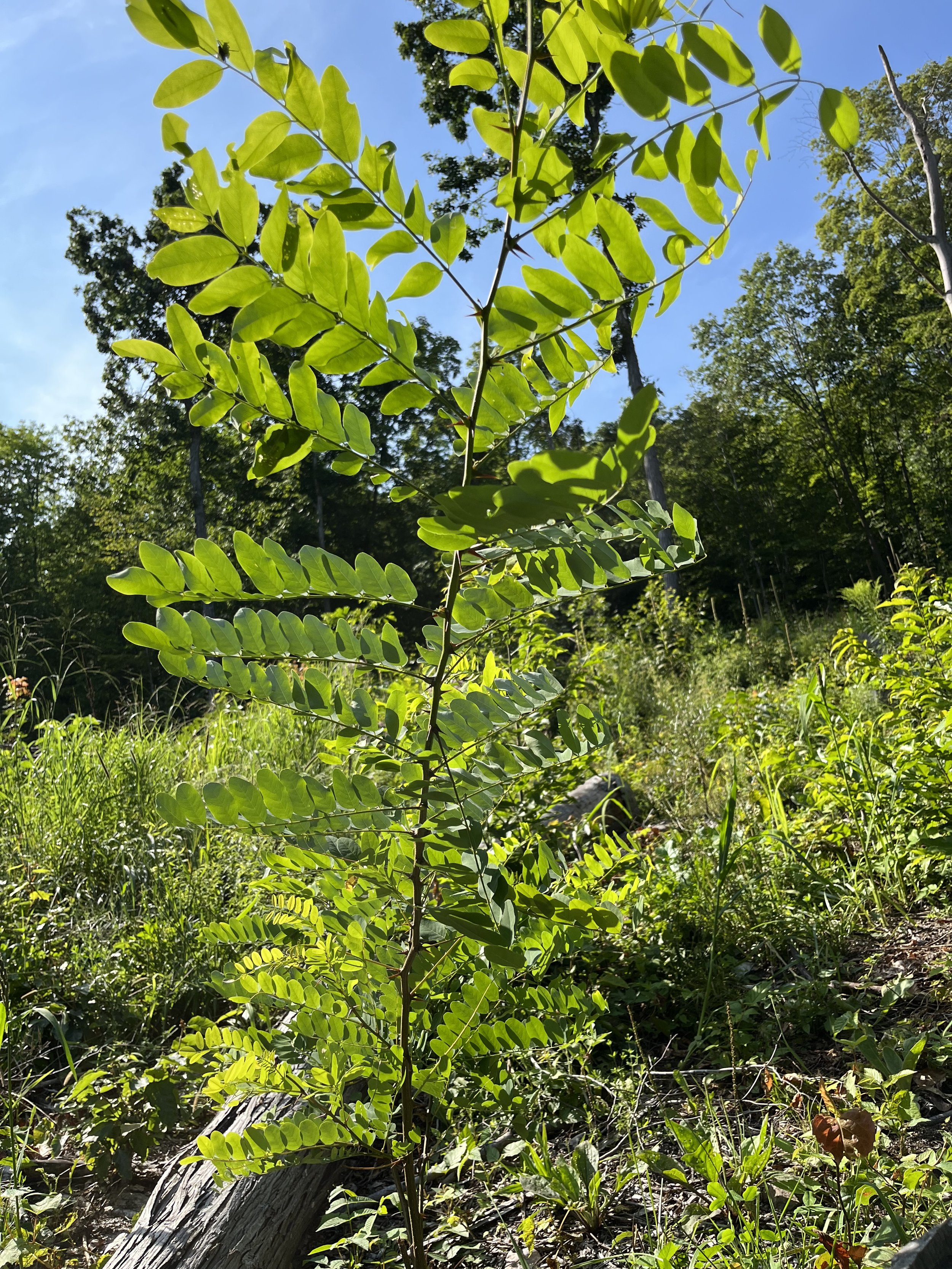Black Locust 'Nyriségi'
1 and 2 yr old seedling trees, 24+ inches
No Shipping to AK, HI, CA, MA, MN, MI, NY
Robinia pseudoacacia
Black locust is one of our favorite trees. This pioneer species, nitrogen-fixing legume tree is perfectly suited to support the growth of other trees around it and under it. Many fast-growing trees have low density wood. Black Locust is very fast-growing but very dense and rot-resistant as a timber tree. It creates a light, dappled shade that allows for plenty of growth in the understory. The tree provides abundant nectar for bees and is used as a honey plant. The white blossoms are edible and delicious. The leaves are comparable to alfalfa in nutritional value, so they make great fodder for ruminants, and the firewood has one of the highest BTU ratings of any species. This tree is revered and widely planted in places like Hungary but often maligned in our country.
We plant Black Locust amongst our other trees as companion plants and use it for ‘chop and drop’ mulch, but there are so many more uses for this tree that we plan to explore in the future. We plan to experiment with basal pruning of dense plantings to create long straight poles for building materials, and we have our sights set on some really straight local trees for cloning. We used black locust as part of our siding when building our house, and we’re making black locust paving blocks for our patio.
Our seed comes from a Hungarian forestry selection called 'Nyriségi.' It originates from the area around the city of Nyíregyháza in northeastern Hungary. It was selected for fast growth and high quality wood.
1 and 2 yr old seedling trees, 24+ inches
No Shipping to AK, HI, CA, MA, MN, MI, NY
Robinia pseudoacacia
Black locust is one of our favorite trees. This pioneer species, nitrogen-fixing legume tree is perfectly suited to support the growth of other trees around it and under it. Many fast-growing trees have low density wood. Black Locust is very fast-growing but very dense and rot-resistant as a timber tree. It creates a light, dappled shade that allows for plenty of growth in the understory. The tree provides abundant nectar for bees and is used as a honey plant. The white blossoms are edible and delicious. The leaves are comparable to alfalfa in nutritional value, so they make great fodder for ruminants, and the firewood has one of the highest BTU ratings of any species. This tree is revered and widely planted in places like Hungary but often maligned in our country.
We plant Black Locust amongst our other trees as companion plants and use it for ‘chop and drop’ mulch, but there are so many more uses for this tree that we plan to explore in the future. We plan to experiment with basal pruning of dense plantings to create long straight poles for building materials, and we have our sights set on some really straight local trees for cloning. We used black locust as part of our siding when building our house, and we’re making black locust paving blocks for our patio.
Our seed comes from a Hungarian forestry selection called 'Nyriségi.' It originates from the area around the city of Nyíregyháza in northeastern Hungary. It was selected for fast growth and high quality wood.
1 and 2 yr old seedling trees, 24+ inches
No Shipping to AK, HI, CA, MA, MN, MI, NY
Robinia pseudoacacia
Black locust is one of our favorite trees. This pioneer species, nitrogen-fixing legume tree is perfectly suited to support the growth of other trees around it and under it. Many fast-growing trees have low density wood. Black Locust is very fast-growing but very dense and rot-resistant as a timber tree. It creates a light, dappled shade that allows for plenty of growth in the understory. The tree provides abundant nectar for bees and is used as a honey plant. The white blossoms are edible and delicious. The leaves are comparable to alfalfa in nutritional value, so they make great fodder for ruminants, and the firewood has one of the highest BTU ratings of any species. This tree is revered and widely planted in places like Hungary but often maligned in our country.
We plant Black Locust amongst our other trees as companion plants and use it for ‘chop and drop’ mulch, but there are so many more uses for this tree that we plan to explore in the future. We plan to experiment with basal pruning of dense plantings to create long straight poles for building materials, and we have our sights set on some really straight local trees for cloning. We used black locust as part of our siding when building our house, and we’re making black locust paving blocks for our patio.
Our seed comes from a Hungarian forestry selection called 'Nyriségi.' It originates from the area around the city of Nyíregyháza in northeastern Hungary. It was selected for fast growth and high quality wood.






